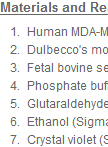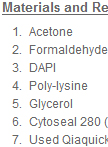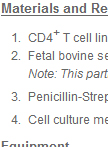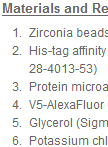往期刊物2012
卷册: 2, 期号: 5
癌症生物学
Scratch Wound Healing Assay
划痕实验
The scratch wound healing assay has been widely adapted and modified to study the effects of a variety of experimental conditions, for instance, gene knockdown or chemical exposure, on mammalian cell migration and proliferation. In a typical scratch wound healing assay, a “wound gap” in a cell monolayer is created by scratching, and the “healing” of this gap by cell migration and growth towards the center of the gap is monitored and often quantitated. Factors that alter the motility and/or growth of the cells can lead to increased or decreased rate of “healing” of the gap (Lampugnani, 1999). This assay is simple, inexpensive, and experimental conditions can be easily adjusted for different purposes. The assay can also be used for a high-throughput screen platform if an automated system is used (Yarrow and Perlman, 2004).
细胞生物学
Collecting and Fixing Nuclear GFP/RFP in L1 Larva for Imaging
用来拍照的转化GFP/RFP的幼期蠕虫的收集和固定方法
In this protocol, L1 stage larvae are collected that carry nuclear-localized GFP/wCherry reporters. These can be fixed so that the GFP/wCherry maintains nuclear localization and stain nuclei by DAPI. This protocol therefore achieves the collection and fixation of nuclei in worm L1 larvae.
微生物学
Amplification of HIV-1 Infectious Virus in BL3 Lab
在BL3实验室扩增HIV-1传染性病毒
This method is used for making high titer human immunodeficiency virus type-1 (HIV-1) virus stock for subsequent infection assays. The amplification of T-tropic HIV-1 virus (IIIB strain) uses the CD4+ T cell line H9.
系统生物学
Probing Yeast Protein Microarrays for Protein-protein Interactions Using V5-epitope Tagged Fusion Protein Probes
通过V5-抗原表位标签的融合蛋白标记酵母蛋白芯片探究蛋白之间的相互作用
Protein microarray is probably the only technique currently available for systematic investigation of protein-protein interactions. This protocol describes an optimized method to probe yeast protein microarrays for protein-protein interactions using purified V5-epitope tagged fusion protein. It should also apply to any other proteins with appropriate modifications.






